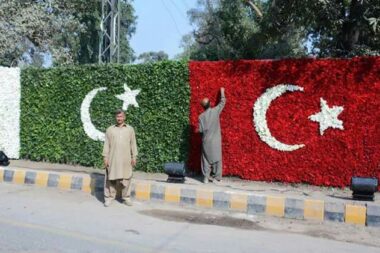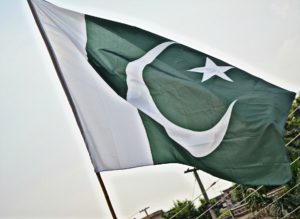 Pakistan is an Islamic state with 96% of population comprising Muslims. The minorities largely constitute Hindus and Christians, with very few number of followers of other religions. The flag of the country symbolizes minorities.
Pakistan is an Islamic state with 96% of population comprising Muslims. The minorities largely constitute Hindus and Christians, with very few number of followers of other religions. The flag of the country symbolizes minorities.
One of the minorities in the country is the Parsi Community, the followers of Zoroastrianism. The community is generalized as hardworking and peaceful. They are praised for their charity work and contributions in literature, industry, health, and education. Unfortunately, the number of Parsis is declining rapidly. They are now confined only to a few cities of Pakistan. Even in these cities Parsis of old ages are left behind as the young ones, in enormous amounts, have settled abroad in hope of brighter future. Let’s have a look at the characteristics of a Parsi Community living in Pakistan.
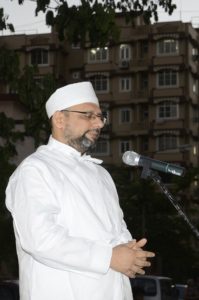 A brief history
A brief history
Parsis are the followers of Zoroastrian religion, one of the oldest religions of the world. They inhabited Persia (Iran) and migrated to the sub-continent during the Muslim conquest of Persia which took place between 8th and 10th century CE. Therefore, the word “Parsi” has been attributed to the Zoroastrians residing in the sub-continent, “Parsi” meaning “Persian” in the Persian language. The traces of Zoroastrians that fled to Sindh from Persia , to shun Islam, have been found dating back to 10th and 12th century CE. However the current modern community’s appearance is associated with the British arrival in the sub-continent.
Settlements in Pakistan
Parsis are settled in some major cities of the country, though the residents are very few. The total number of Parsis living in Pakistan is estimated to be 1,092. The oldest Parsi settlement in Karachi is the Cyrus Minwalla Colony, built by Cyrus F Minwalla, who used to be the vice-president of the Karachi Cantonment Board. The residential area of Parsis in Quetta is the Parsi Colony, located in the heart of the city. It was once a bustling place with a number of families residing but now there are only three to four Parsi families left in the colony. Parsis also once dwelled in Lahore in significant numbers. However, now only few Parsis remain in Lahore, their settlements are getting emptier day by day. Sadly, the number of Parsis in Lahore is now just two-figured.
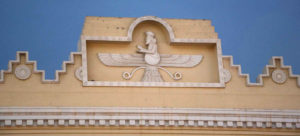
Parsi culture
The culture of the Parsi community is based on the basic Zoroastrian principles of purity and pollution, Navjote, daily and general prayers, and the rulings on marriages and funerals. They strongly believe in charity and are known for their philanthropy. The general well-off Parsis actively participate in donations and charity.
Societal Norms
They have always been regarded as a discipled, well-organized, well-educated, and sophisticated members of the society, with majority of well-off merchants involved mostly in shipping and trading businesses. During the Mughal period, Parsis were actively involved in trading, providing the Mughals with goods not available locally at that time.
Navjote
An act, called “Navjote”, is part of the culture and a pre-requisite of the religion. It is an act performed for a child to enter the community and the religion. It is performed on a child, ideally before the age of 7 years.
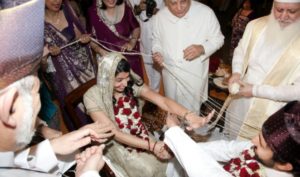 Marriages
Marriages
The marriages for Parsis are very important as they believe in expansion of God’s kingdom through procreation.
Funerals
The culture regarding funerals has been seen to follow two paths. Often, the places called “Tower of Silence”, are utilised and the dead body is left there for decomposition. However, there are several Parsi burial grounds too, one of the significant ones being in Rawalpindi.
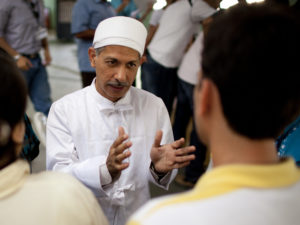
Zoroastrian priest Ramiyar Karanjia fields questions during a meeting with young members of the faith in Pune, India, on May 13, 2010.
Rituals and traditions
Parsis have certain traditions when it comes to events and happenings in the life. Rituals are performed on birth, before birth, marriages and deaths. The newborns are taken to fire temples after the mother has had her 40th day ritual bath. Once the child is reaches the age of 7 years, he is initiated into the religion by a priest, the ritual called “Navjote.” The Birthdays in a Parsi household are celebrated by bathing the child in milk, rose petals, rose water, and rice. Rice is also used in a wedding ceremony, where the bride and groom are given handful of rice to throw. The first person to throw is considered dominant in love and respect of the relationship. The hands of the bride and groom are tied with each other through a cloth, symbolizing unity. The prayers by the priest complete the wedding, finalizing by pronouncing the couple husband and wife. While, the death rituals include family not eating meat for first three days after a funeral. A traditional meal with meat is cooked on the fourth day. The daily and monthly prayers for the deceased are then performed regularly.
Contributions
The Parsi community is famous for its charity work and providing Pakistan with many infrastructures, that are considered top-notch till today. The well-known institutes include the Mama Parsi School, the DJ Science College, BVS Parsi High School, the Dow Medical College, hospitals including Goolbanoo & Dr. Burjor Ankelsaria Nursing Home, and hotels the Metropole, Beach Luxury and the Avari hotels. The contributions of the community are so evident and praised that the first elected mayor of Karachi, who was also a Parsi, is known as the founder of modern Karachi.
The Murree brewery 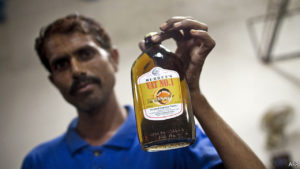
The very famous “Murree Brewery” company is also a legacy of the Parsis. It was bought by a Parsi businessman in 1947 from the British. It manufactures alcoholic and non-alcoholic beverages including the world class “Malt Whiskey”. It ranks among the top 25 performing public companies in Pakistan.
Declination in Pakistan and its reasons
The number of Parsis residing in Pakistan is declining drastically. The whole areas and colonies that were once vivid and lively dwellings of the Parsis are now almost empty places. Seemingly, few old-aged Parsis are now left in these places. The reasons that are held responsible for their disappearances are immigrations and late or no marriages. The youth has moved abroad to explore job and education opportunities. Secondly, Parsi women pursue higher education and settle down with a good job or business, sometimes marrying late and sometimes not marrying at all.
The community looks forward to the officials to establish strategies to conserve the Parsi Community in Pakistan. However, considering the current circumstances and the pace of immigrations, it is estimated that after two decades there might not be a single Parsi left in Pakistan.




